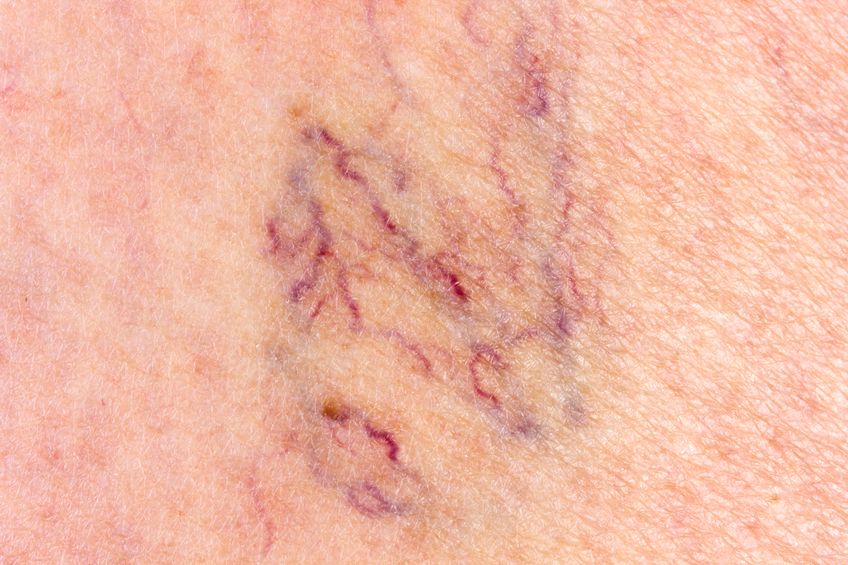Broken capillaries, commonly known as spider veins, or by medical terminology telangiectasia, are tiny blood vessels that we see on the surface of the skin,” says Manhattan plastic surgeon Dr. Mark Schwartz. “Most of these blood vessels are capillaries which connect arteries and veins. Aside from the face, broken capillaries are also commonly found on the legs, especially at the ankles and knees.”
Key causes of broken capillaries
Broken blood vessels can be due to a number of different causes, the most common being damage to the skin from irritation, inflammation, and repeated exposure to the sun. While some causes are preventable, others are beyond control.
Here a couple of possible causes for these marks to start appearing:
Pregnancy: During this stage women commonly have a lot more blood flowing throughout the body which may lead to enlargement of the capillaries which ultimately leads to broken vessels or spider veins typically situated in the abdomen area.
Leg Injuries: Broke Capillaries are apparent for people who suffer from elevated or reduced blood flow caused by leg injuries. People who spend a long time standing up and then followed by pronged sitting down or lying down are more susceptible.
Hormones: Women passing through menopause stage, pregnant women and children going through puberty may develop spider veins as their bodies try to adjust to changes in hormone levels.
Skin Damage: The skin region surrounding the face is more likely to suffer damages than other parts of the body, which is why it’s more common to find broken capillaries on the face. Spider veins may form due to facial skin damage caused by wind, changes in temperature and even glasses pressing on certain areas of the face.
Age: As we age, there are changes in the collagen of both the skin and the small capillaries, which may cause them to weaken and become more visible.
Effective Treatments for Broken Capillaries:
Laser Treatment: Lasers produce intense beams of light that are different colors and wavelengths that vary in their intensity and pulse duration. When undergoing treatment, a handpiece is held near your skin where it transmits the laser frequency.

Sclerotherapy: This treatment, used since the 1930s, entails a salt solution being injected into the affected veins, which subsequently cause them to collapse and stick together, clearing them from the legs.
How can you prevent broken capillaries?“Wear sunscreen to protect your skin from the sun and to limit spider veins on the face,” says Dr. Mardirossian. “Exercise regularly to improve your leg strength, circulation, and vein strength. Focus on exercises that work your legs, such as walking or running. Control your weight to avoid placing too much pressure on your legs. And alternate the pressure on your legs when standing up for a long time.”
The effects of makeup and facial treatments on broken capillaries: “Overly drying face washes or washes and wipes with harsh ingredients can irritate the skin, damage the epidermis and cause facial redness and swelling that may encourage new vessel growth,” “Grainy, exfoliating face scrubs can damage sensitive face skin, leaving it to heal and create new vessels. Picking and squeezing pimples and pores can break vessels and cause redness, too.”
This is a careful reminder that in the face area, it’s important to use gentle treatments that do not cause excessive trauma to the delicate skin. Using makeup on the other hand is perfectly fine. “I have never seen makeup cause spider veins,” In fact makeup has not been proven to cause spider veins, it can be used for temporary conceal them.
Health and Beauty tips
2200 SW 16 ST Suite 224 Miami, FL 33145
Please “like” & share! Thank you!
I hope you’ve found some of my tips helpful!
FOR LIVE ACTION, FOLLOW ME ON SNAPCHAT: lizskincare
INSTAGRAM: lizskincaremiami
BEST SKINCARE WISHES LIZ SKINCARE




No comments:
Post a Comment